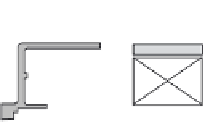Environmental Engineering Reference
In-Depth Information
were to be used in a plug-in hybrid or BEV, the claimed charge time of 6 min will
demand an electrical service of 624 kW. In Chapter 1 it was noted that a level 3
charger is designed to operate from 240 V
ac
and 7 kW or higher. Other classes within
level 3 will elevate this to 250 kW for dc chargers. Connectors will be the real
concern and are being addressed by standards setting organizations.
5
At the time of
this writing EESTOR has not met their final milestone for scaled sample testing.
6
2.6 Flywheel systems
Flywheel energy storage has been promoted by some for several years as a viable,
high cycling, storage medium. ORNL did considerable work on 500 Wh flywheel
units for automotive use during the last decade. With the availability of high tensile
strength fibres, it is possible to develop high energy density storage systems sui-
table for vehicular use. This topic is discussed more under energy storage system
in chapter 10. A second application of flywheel technology has been to use the M/G
itself as the flywheel.
2.6.1 Texas A&M University transmotor
Figure 2.36 is a functional diagram of a flywheel hybrid system developed at Texas
A&M University referred to as a 'transmotor' system. Transmotor is an electric
motor suspended by its shafts and having both rotor and stator in motion. As a speed
reducer or for speed increase, the transmotor permits constant speed operation of the
Battery
Motor
controller
Stator
Rotor
Clutch 3
Clutch 1
Clutch 2
Gearbox
Engine
Housing
Figure 2.36 Transmotor basic configuration (with permission from Texas A&M
University)
5
SAE J1772 specifies 80 A dc connector and IEC18651 an 80 A ac rating connector. Connectors for
charging up to 250 kW are in the development process.
6
Public announcements that scaled EESU samples would be available by the end of 2009 did not
materialize, nor has there been any public announcement by October 2010.


























































































